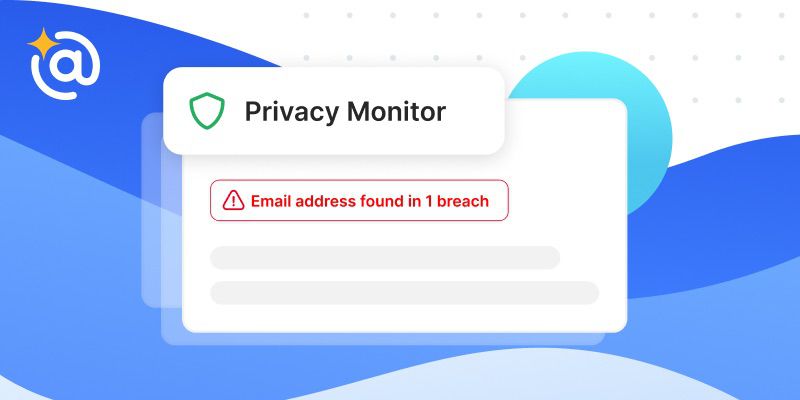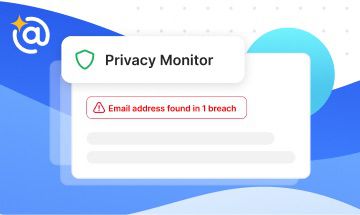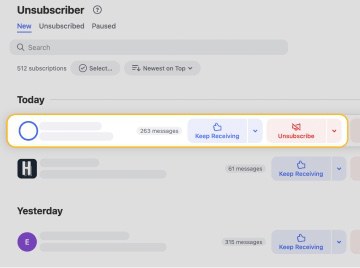What Is A Digital Footprint?
In simple terms, a digital footprint is a record of your online activity. It’s made up of data left behind by your internet usage and the information you share online — both intentionally (such as social media posts) and unintentionally.
Almost everything you do online leaves a digital footprint of some kind. And they can be used to see where you’ve been and what you’ve been up to. They can also predict what you might do — or, more importantly, what you might be interested in — in the future. It’s important to be aware of this, particularly if you would prefer not to share your internet usage habits.
Digital Footprint Examples
Digital footprint examples can be an incredibly wide variety of things, since almost everything you do online leaves a trace. More obvious examples include things like social media activity — status updates, sharing photos and videos, and checking in with your location. These are traces you consciously leave, and you know that they’re out there.
But there are many online footprint examples that aren’t so obvious. Some of these include:
- Logging into an online account
- Browsing an online store or making a purchase
- Signing up for a newsletter and other services
- Applying for a credit card, loan, and other kinds of finance
- Watching videos or listening to music
- Performing internet searches
All these things, and many more, leave a trace that can be used to find out about you and your interests. These traces are commonly used by advertisers, who like to know as much as possible about you so they can serve you personalized or “targeted” ads that you’re more likely to click on. They can also be used by potential employers to find out more about you.
Best Digital Footprint Safety Tips
Although it’s near impossible to leave no online footprint at all, reducing your online footprint or leaving a more positive digital footprint is possible. Here are some online footprint safety tips that can be incredibly useful:
1. Cut down on the data you share
If you don’t want others to know what you’re up to, one of the simplest things you can do is not tell them. Limit what you share on social media and think carefully about filling out online forms. When signing up for a new account or service, consider the kind of information they want from you — and whether you really want to share it.
2. Avoid linking online services
Many websites now give users the ability to log in using another service, like Facebook. This speeds up the sign-up process and makes things simpler. But it also gives websites access to your social media profile and makes it easier for them to track your digital footprint, along with what you're interested in.
3. Delete old accounts
It’s important to delete any you no longer use — especially if they’re particularly old. These accounts may be less secure than those you use regularly, and they hold information that helps contribute to your online footprint. Delete them if you don’t need them anymore.
4. Don’t use public Wi-Fi networks
One of the most dangerous things you can do is connect your devices to a public Wi-Fi network. These are notoriously unsafe since they’re not password protected, and they are regularly used to collect data on everything you do while you’re connected. Avoid them as much as possible, and if you must use one, be sure you don’t enter passwords, credit card information, and other sensitive information when you’re connected.
5. Use data protection services
There are services you can use that will help conceal your online habits. A good VPN can conceal your web traffic so that others, including your internet provider in some cases, can’t see what you’re up to. Other services, like Hide My Email on iPhone, allow you to avoid sharing your real email address to increase email security.
6. Use a password manager
By now you should know that it’s risky to use the same password for more than one service. When you do this, it means that if one of your accounts is compromised, they’re all compromised — and that greatly increases the amount of data that can fall into the wrong hands. Use a password manager to create unique passwords and increase password security for every service you use.
Check If Your Data Has Been Compromised With Privacy Guard
Another great way to protect your digital footprint is to use a hacked email checker to see if any of your data has been compromised (learn more about how to delete digital footprint). Clean Email has an excellent Privacy Guard feature, free to all users, that checks your email address against known data breaches and security incidents. It’s an easy way to find out if any of your data has made its way into the wrong hands.


If any email data breaches are found, Clean Email’s Privacy Guard will advise you on the steps you need to take, such as changing passwords and enabling two-factor authentication, to regain control.
Another great reason to use Clean Email is its Unsubscriber feature, which makes it amazingly simple to unsubscribe from newsletters, promotions, and spam emails you don’t want.


What Is A Digital Footprint - FAQs
Why is digital footprint important?
A digital footprint is important because it can contain sensitive data about your online activity. Your footprint tells others, like advertisers and potential employers, where you’ve been online, what your interests are, and what you might be interested in in the future.
What are the 2 types of digital footprint?
The two biggest types of digital footprint are the one you create intentionally — like when you post on social media — and they one you create unintentionally simply by visiting a website, logging into an account, buying products, and lots more.
What does it mean to have a positive digital footprint?
A positive digital footprint is one that mostly includes information you’ve consciously chosen to share. Although it’s impossible to have complete control over your footprint, you can take steps to cut down on the data you leave behind. You can also use services like a VPN to conceal online habits you want to hide.
How can your digital footprint affect your future opportunities?
It’s important to bear in mind that your digital footprint can be seen by those who want to see it. This can include potential employers, which means it could have an impact on whether you get a job you want in the future. Think twice about sharing things online, particularly on social media, that could paint a negative picture of you.
How can I protect my digital footprint?
There are many ways you can protect your digital footprint, which we’ve listed in this guide. They include being careful about what you share, deleting old accounts you no longer use, using unique passwords for each of your online accounts, and avoiding public Wi-Fi networks.


